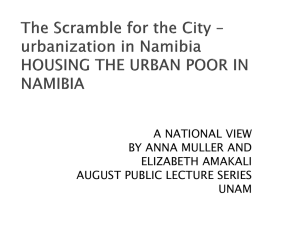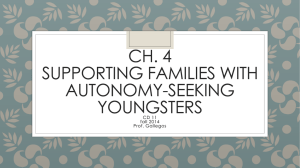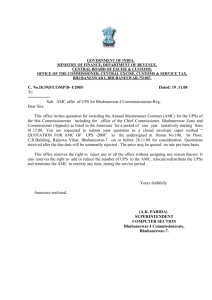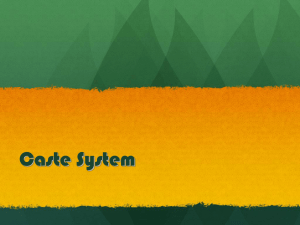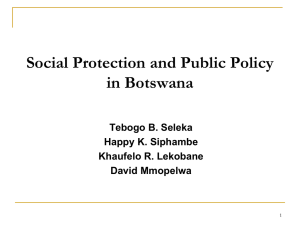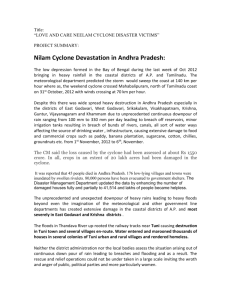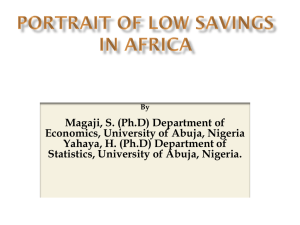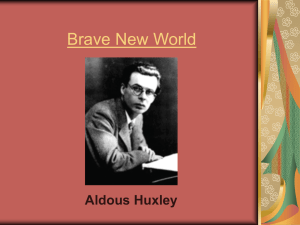Material Cultures of Financial Literacy Among Rural and Urban Poor
advertisement
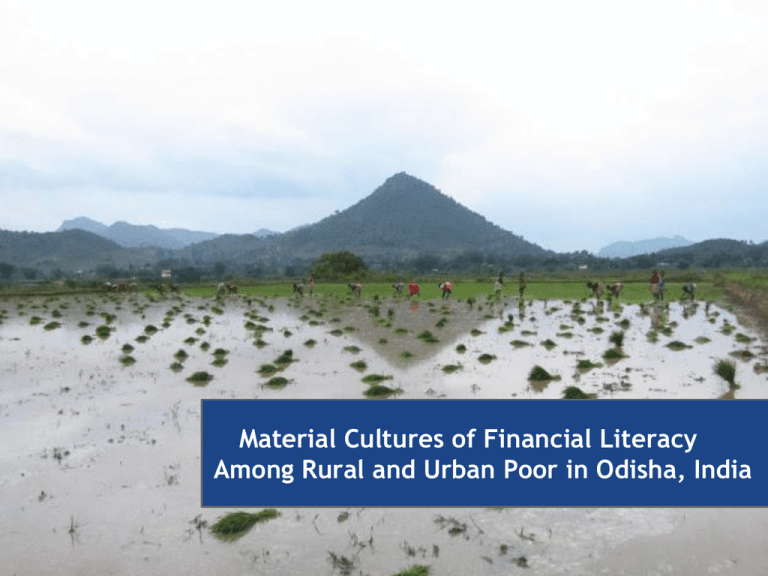
Material Cultures of Financial Literacy Among Rural and Urban Poor in Odisha, India Researchers Nishita Trisal, MA ntrisal@gmail.com PhD Student, University of California-Santa Cruz Pradeep Baisakh, MA 2006pradeep@gmail.com Journalist based in Bhubaneswar, India Katherine Martineau, MA kbmartin@umich.edu PhD Candidate, University of Michigan Faculty Sponsor: Professor Webb Keane Department of Anthropology University of Michigan We offer our sincere thanks to IMTFI for its support of this project. We are also grateful to the IMTFI Administrator, Jenny Fan, for her kind assistance. "Unbanked" India from India's National Strategy for Financial Education (2012) But what economic management skills do poor people already have? The ethnography of material culture provides a method for understanding resource management cross-culturally. -What objects and material practices do people use to organize, make sense of, store, transfer, and protect their resources? -Which qualities of those objects matter most? -How do those objects fit into broader social and cultural contexts? Case studies of material culture An object is multifunctional when it has multiple uses that everyone knows about. Research Sites India's eastern coastal state of Orissa or Odisha has been considered one of India's poorest regions for over two centuries. Bhubaneswar State capital Population approx. 1 million "Old Town" is 40-50,000 Bariguda Village in Rayagada District Multi-caste and multi-ethnic village of 240 households 4 KM from a market town Bariguda Village • • • • Residents consist of Kondh "Scheduled Tribe", Domb "Scheduled Caste", and "Other Backward Class" (Paiko and Sundi) Approximate income of households is 150 rs/day Institutions: 1 local bank branch. Numerous NGOs work in the area, and many residents participate in Self-Help Groups. Long-form, open-ended interviews with 8 households o 3 Scheduled Tribe o 3 Scheduled Caste o 2 Other Backward Caste Bhubaneswar, Old Town • • • • • Residents are historically related to temple service Approximate income of study households is 600010,000/mo Households rely on unskilled labor and domestic service Numerous nearby banks. Numerous NGOs work in the area, and many residents participate in Self-Help Groups. Long-form, open-ended interviews with 5 Scheduled Caste households Objects The shop Electrical Repair Purno's House The son's room Area designated for menstruating women Cooking area for nonmenstruating women Houses embody social relations and value A new floor, built with a microfinance loan. A roof that needs fixing, but is too expensive. Storing Separating/Earmarking Houses manage resources Protecting/Caring Concealing Reminding Gobinda explains the details. Panchayat headquarters Gobinda's BPL or "Below Poverty Line" Document How to hold the BPL Card. Tuni and her daugher Tuni's Loan Papers Several members of Tuni's Self-Help Group also witness her microfinance loan Designing for Multifunctionality The design of financial inclusion programs must create a balance between a public stage for general participation and techniques that allow participants to hide their specific actions. Object 3: Booze Illegal "country-made" liquor is an essential part of social networking for Bhubaneswar's day laborers: • builds reciprocity among known contacts • extends social network to new men • intoxication makes disgusting and undignified work more bearable • 30Rs./bottle: it is affordable for laborers by the bottle, expensive by the night Financial Literacy Resource Management Techniques Top-down Bottom-up Limited local application Based on local practice Value-ignorant Value-sensitive Erases local knowledge Recognizes local knowledge/skill Qualities That Matter 1. Visibility/Invisibility Valuables are safest when no one can see them. Moreover, invisibility may protect one from social obligations to others that can result from savings. 2. Durability Resource management techniques must be able to withstand the extreme wear and tear of precarious daily life. 3. Sociality of Access Who controls access to a resource? Poor Odias prefer to maintain control rather than have it dictated by an institution. 4. Bundling of Uses The multifunctionality of objects and material practices is itself an important quality. It also relates to each of the above qualities. Summary: Houses

